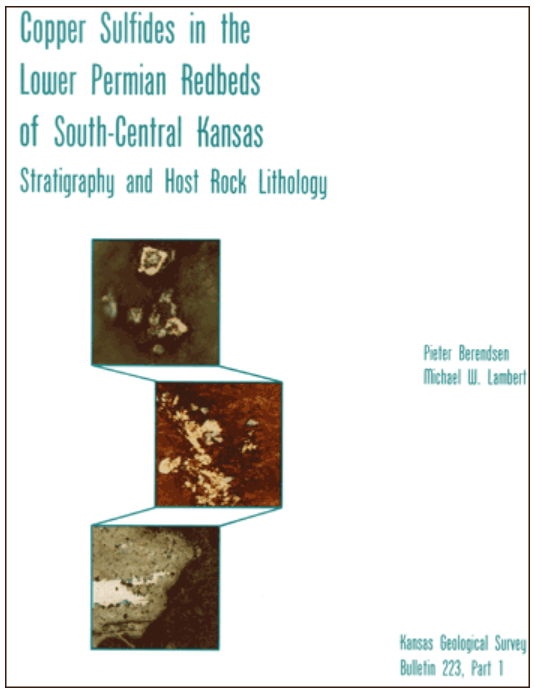Stratigraphy and Host-Rock Lithology
DOI:
https://doi.org/10.17161/kgsbulletin.no.i223.22272Abstract
Examination of core extracted from 16 drill holes in Sedgwick, Sumner, and Harper counties, together with a review of the literature, indicates that copper mineralization of the stratiform type occurs all through the non-oxidized parts of the upper part of the Wellington Formation and the Ninnescah Shale. The mineralized units commonly are five to 10 cm thick and consist of organic-rich shales and carbonate beds. Primary dispersed copper was adsorbed on clays in the original sediment. At some time after the rocks were deposited, oxygenated surface waters remobilized the copper and also dissolved chlorides and sulfates contained within the sediments. Oxidation of the sediments is thus viewed as a secondary process with copper being redeposited and concentrated near the oxidation-reduction interface downdip from the surface.
Downloads

